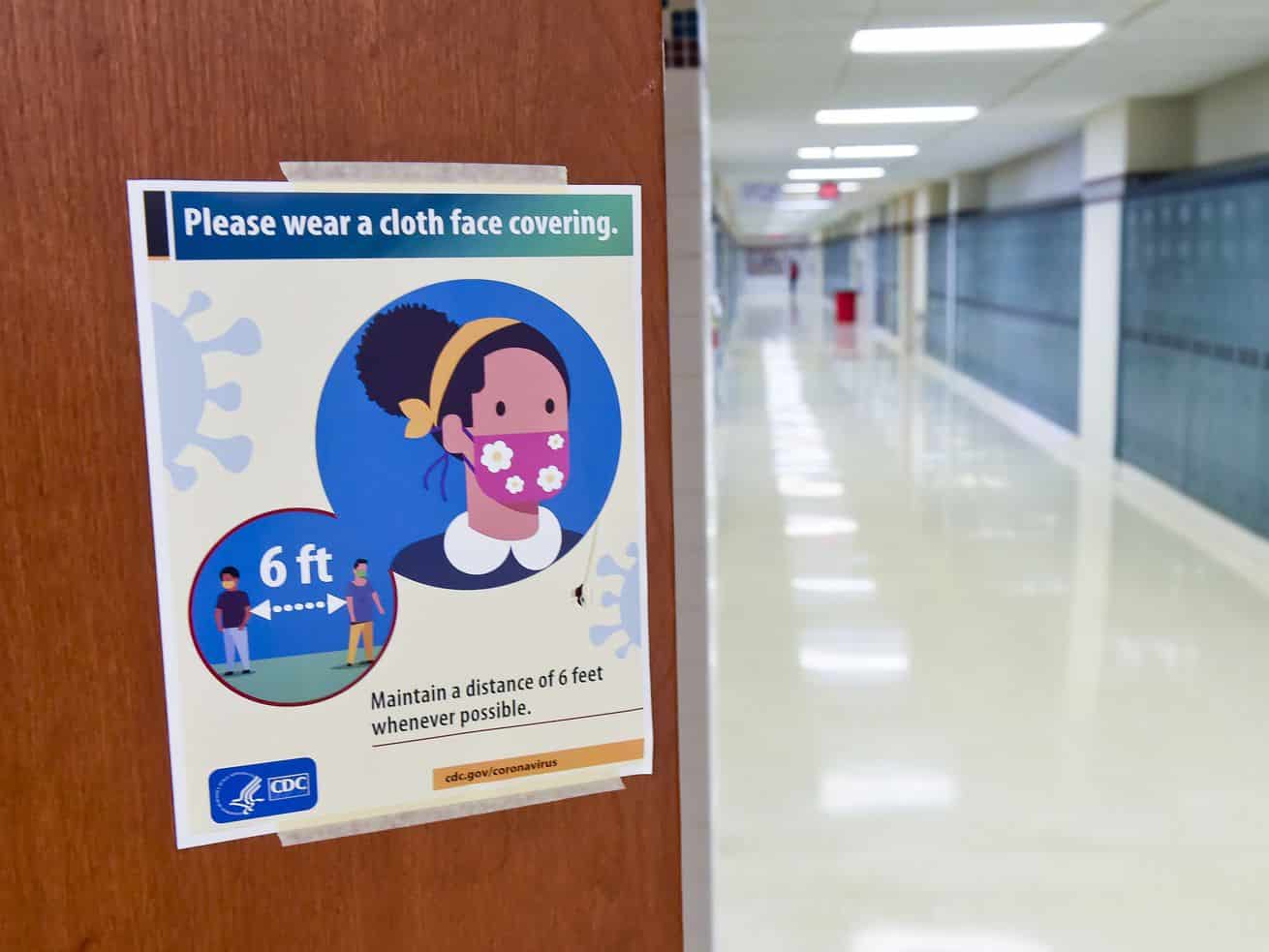The agency released new guidelines for how to reopen schools safely.
The Centers for Disease Control and Prevention released guidelines on Friday about how to safely reopen schools — outlining the precautions that help mitigate the spread of Covid-19 as students go back to classrooms.
The general conclusion is that schools can safely reopen with proper precautions. But the CDC’s guidelines are only advisory, walking schools through what kinds of precautions would help based on the level of community spread. “I don’t think I have the authority to demand that schools reopen,” Walensky said, explaining that her job, instead, is to provide guidance for how to make reopening as safe as possible.
The recommendations come as reports of problems among school-aged children, including learning loss and mental health crises, continue to mount. At the same time, more research suggests kids aren’t at high risk of Covid-19, and schools aren’t superspreading sites. That’s driven more experts to argue that the benefits of closing schools aren’t worth the costs.
The CDC pointed to five major steps schools can take to safely reopen: universal masking, physical distancing, consistent handwashing and other respiratory etiquette (like covering your cough), cleaning school facilities, and Covid-19 testing and contact tracing.
The CDC highlighted masking and physical distancing as top priorities for in-person teaching. It also advised schools to take more of these steps, and implement them more aggressively, if Covid-19 is spreading rapidly in the community surrounding schools, based on color-coded “phases.”
Walensky described the steps as “layers,” which are more effective if they’re all working together. Throughout Covid-19, experts have used the analogy of stacking slices of Swiss cheese: Holes might show up at each layer, but extra layers make it more likely those holes are fully covered.
The CDC also pointed to several strategies, beyond the five major steps, that could help make schools safer. Schools could improve ventilation — even just by opening doors or windows. They could cancel extracurricular events, particularly those that are indoors. They could vaccinate teachers, with state governments possibly prioritizing teachers over other groups if it’s deemed necessary to reopen schools more quickly.
Walensky said, though, that vaccinating teachers isn’t necessary to reopen — echoing past remarks she’s made.
The CDC also put some of the responsibility on the broader community around schools: If the coronavirus is raging outside school walls, it’s much more likely to creep into schools — perhaps forcing them to close down. “In short, success in preventing the introduction and subsequent transmission of SARS-CoV-2 in schools is connected to and facilitated by preventing transmission in the broader community,” the CDC’s “Operational Strategy for K-12 Schools through Phased Mitigation” noted.
CDC officials previously hinted at the broad strokes of the guidelines in an earlier article for JAMA. In that analysis, CDC researchers concluded that there’s now solid evidence schools can safely reopen — but with the right precautions. In one study of 17 K-12 schools in rural Wisconsin with strong adherence to masking and other steps, there were only seven cases of Covid-19 due to in-school transmission over 13 weeks.
The CDC cautioned that new scientific evidence or developments, including new variants of the coronavirus, could lead it to alter its recommendations.
A big hold-up to all of this is money. While cloth masks and opening a door are relatively cheap steps for schools to take, more aggressive interventions, like thorough testing and contact tracing or improving ventilation systems, can cost schools a lot of money — at a time when school districts as well as local and state governments may face budget cuts as a result of the weakened economy.
The federal government enacted nearly $70 billion for K-12 schools in relief packages last year. President Joe Biden has called for an additional $130 billion to help schools reopen as part of his broader economic relief package, but Congress hasn’t passed the proposal yet.
That, then, may be the next hurdle to a wide reopening of schools: They now have the CDC guidance, but they may not have the cash on hand to fully implement it.
Sign up for the Weeds newsletter. Every Friday, you’ll get an explainer of a big policy story from the week, a look at important research that recently came out, and answers to reader questions — to guide you through the first 100 days of President Joe Biden’s administration.
Author: German Lopez
Read More



